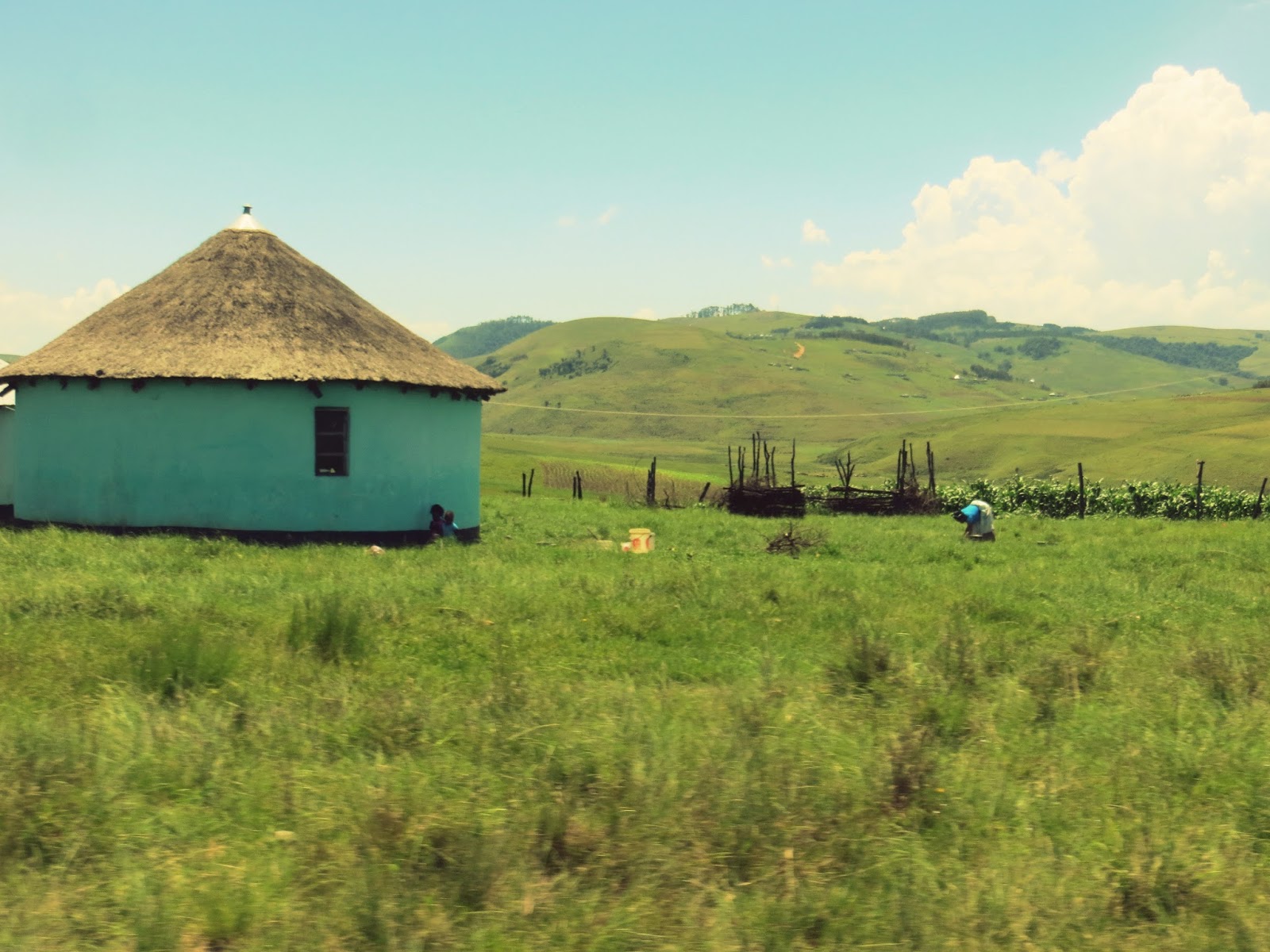Quando quell'artista afro-indiano di Mossel Bay voleva vendermi un suo dipinto con palme e casette rotonde, l'aveva capito subito che mi incuriosivano. 'Sono tipicamente africane!', aveva detto. E mentalmente cercavo un ricordo da qualche parte nella mia testa, ma niente. Di case rotonde non ne avevo ancora vista una. 'Dove si possono vedere?' gli avevo chiesto, e lui esultante 'QUI...dappertutto!'
I rondavels non si trovano proprio dappertutto, ma in Sud Africa è stato da Mossel Bay in poi che il paesaggio ha cominciato a colorarsi con la loro fiera presenza. Se ne trovano di diverse versioni, semplici o decoratissimi, monocolore o estremamente colorati - senza escludere rosa-shocking e verde acqua. Le colline della provincia del Capo Orientale e di quella di Kuazulu-Natal sono una meraviglia con i loro rondavels. La domanda che mi girava in testa era banale ma sincera: perchè una casa rotonda? Mi è stato detto perchè tutto ruota intorno a un centro, e tutti contribuiscono all'unità di quel centro, di quella famiglia, ancor prima di occuparsi di se stessi. E' in cerchio che la comunità si riunisce. Romantica come risposta, ma potrebbe essere anche per semplice praticità...nessun angolo da appuntire. Ora, a dire il vero, la mia ingenua meraviglia di fronte al rondavel deriva anche dal fatto che mi mancano le versioni nostrane. I trulli della Puglia, bianchi e unici nel loro stile (addirittura patrimonio dell'Unesco), mai visti. E l'irlandese/scozzese crannog nel bel mezzo del lago? Questo sì che è da vedere!
☻▬▬☻▬▬ ☻ ▬▬☻▬▬☻
When a certain African-Indian artist wanted to sell me one of his paintings with palms and round houses, he sensed immeditaly my interest in those round houses. 'They are very African!', he said. But as much as I tried I could not remember to have seen any round house yet. 'Where can I see them?', I asked, and he joyfully replied 'HIER....everywhere'.
The rondavels are not exactly everywhere in South Africa, but after passing the city of Mossel Bay they started to dot the landscape with their colourful presence. Each owner gives a special touch to his rondavels and indeed they can seen in many variations. Simple or superdecorated, monocolour or brightly coloured, including shocking pink or watergreen. The rondavels make the pretty hills of the Easter Cape and Kuazulu-Natal even prettier. But the banal yet sincere question I had in mind was, why would a house be round? I've been told they're circular as the community comes together in a circle, and everyone contributes to the centre and not for themselves. A romanticized answer perhaps, but I take it as it is and add that perhaps is just a matter of practicality. Isn't it practical to build a house having no corners to sharpen? To tell the truth, my wonder of the rondavels comes also from the fact of missing our version of round houses. The famous trulli in Apulia region, white and unique in their style to constitute even a Unesco heritage site, I have never seen them. And what about the Irish/Scottish crannog in the middle of a lake? They must be worth a visit!



ma l'hai comprato il dipinto?
ReplyDeletesi, quello con le giraffe però :)
ReplyDelete